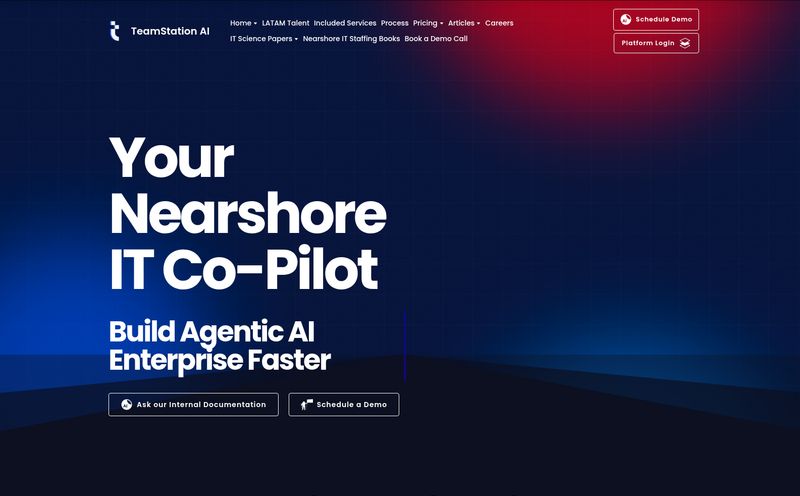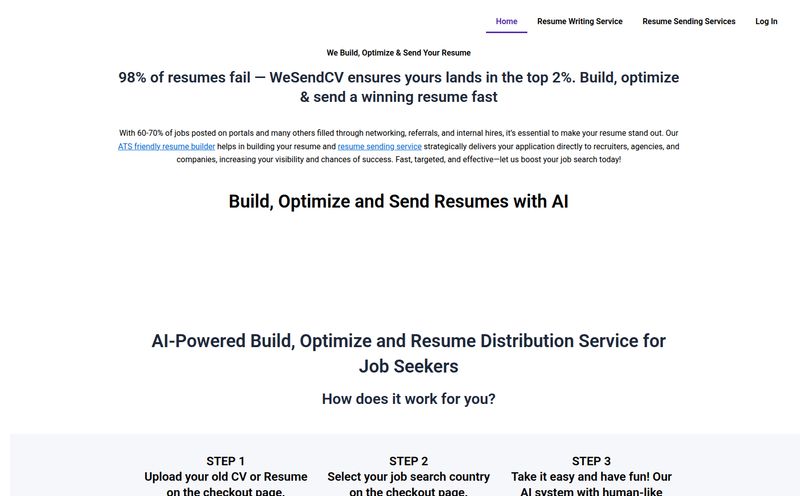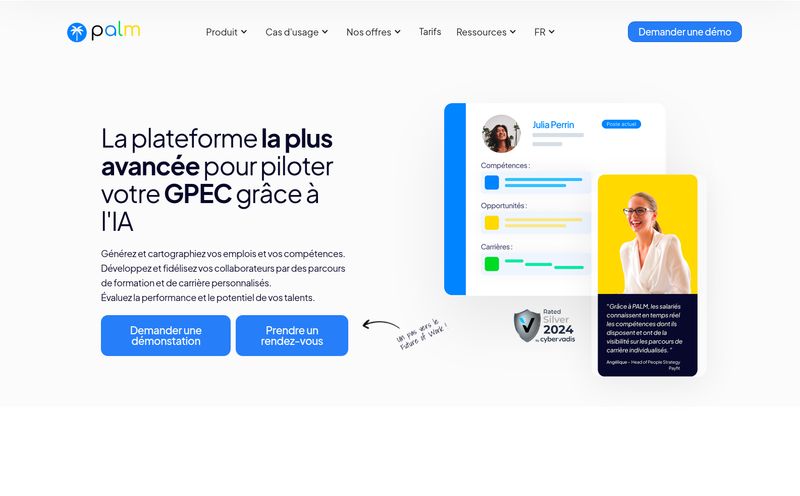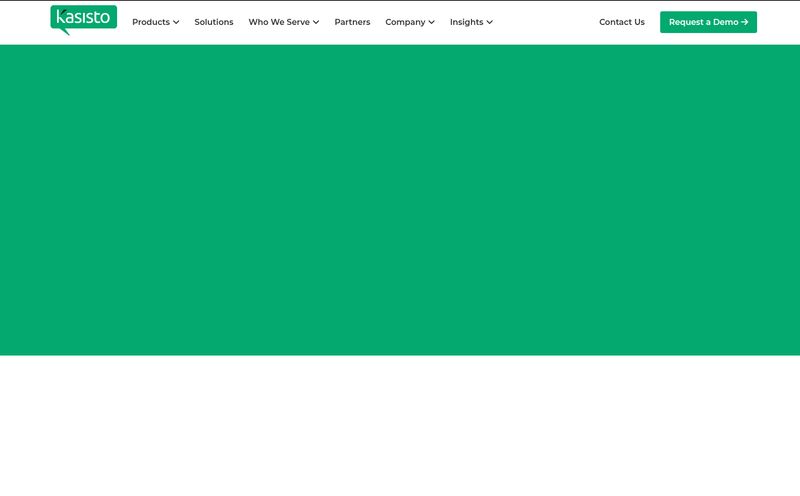As business owners, marketers, or ops managers, we're all drowning. Drowning in a sea of tiny, repetitive, soul-crushing tasks. You know the ones. Copying data from a form into a spreadsheet. Manually creating a Trello card from a Slack message. Chasing down information for a weekly report. It’s the digital equivalent of death by a thousand papercuts, and it’s killing our productivity and our creativity.
For years, the promise of automation has been dangling in front of us like a carrot. Tools like Zapier and Make.com came along and, for a while, they felt like magic. And they are great, for simple A-to-B connections. But the moment you have a process with any real complexity—one that requires a bit of judgment, or deals with a weirdly formatted document—those systems tend to throw their hands up in the air. They just... stop.
So when I first heard about Wrk, I was skeptical. Another platform promising to solve all my problems? Sure. But they were saying something different. They talked about automating any process in under 24 hours. They mentioned a hybrid model of bots and actual people. My interest was piqued. This didn't sound like another DIY connector tool; it sounded more like a full-service automation agency. I had to see what was under the hood.
So, What Exactly is Wrk? (And Why Should You Care?)
Think of it this way. Most automation platforms sell you a high-tech LEGO set. They give you all the pieces (the triggers, the actions, the APIs) and a complicated instruction manual, and then wish you the best of luck. If you're a developer or a super-technical person, that’s awesome. You can build anything. But for the rest of us? We end up with a half-finished spaceship and a pile of leftover bricks.
Wrk is different. They don't just sell you the LEGO set; they ask you what you want to build, and then their team of experts builds it for you. You just describe your workflow in plain English—no code, no flowcharts, no technical jargon—and they deliver a fully functional automation, often in less than a day.
This is a fundamental shift. It takes the burden of building the automation off your shoulders and lets you focus on the outcome. For businesses that don't have a dedicated developer on standby, this is massive.
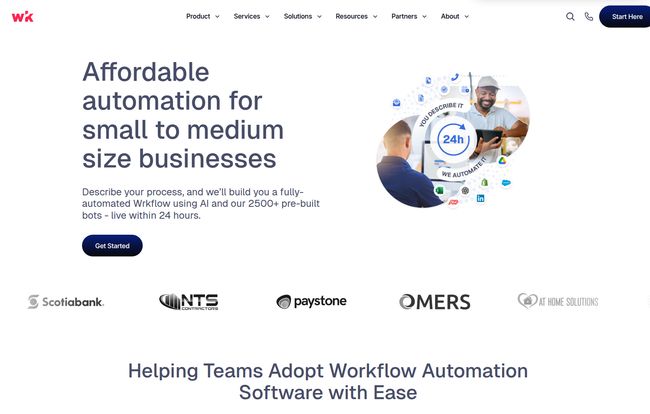
Visit Wrk
The All-in-One Approach: More Than Just Connecting Apps
The reason Wrk can make these bold claims is because they're not just a one-trick pony. Their platform is a powerful blend of different technologies, which they mix and match to recreate your exact process.
RPA Bots for the Grunt Work
At its core, Wrk uses Robotic Process Automation (RPA). These are software 'bots' that can mimic human actions on a computer. Think logging into a website, navigating menus, copying and pasting data, and filling out forms. This is the heavy lifter for all that structured, repetitive data entry that everyone hates.
The Human-in-the-Loop Secret Sauce
Here’s where it gets really interesting, and frankly, it's Wrk's secret weapon. What happens when a bot encounters something it doesn’t understand? A weirdly scanned invoice, a subjective customer complaint, a new field on a form it wasn't expecting? Most automation platforms just fail. You get an error message and the whole process grinds to a halt.
Wrk has a built-in "human-in-the-loop" system. When a bot gets stuck, the task is seamlessly routed to a member of their skilled community. A real person looks at the problem, makes a decision, and sends it back to the bot to continue the process. You get the speed and efficiency of a bot with the cognitive flexibility of a human. It's brilliant, and it solves the biggest failure point of traditional automation.
OCR, APIs, and AI Smarts
On top of that, they layer in other tech. They have Optical Character Recognition (OCR) for pulling data from PDFs and scanned documents. They have a huge library of API connectors for integrating directly with platforms like Salesforce, Google Drive, and Slack. And they sprinkle in AI for more advanced tasks. It's a complete toolkit.
The Elephant in the Room: Wrk Pricing
Okay, let's talk money. This is where people can get a little confused because it’s not a simple, flat-rate SaaS subscription. It's a bit more... bespoke. But once you get it, it makes sense.
Their pricing basically has two parts:
- The One-Time Build Cost: This starts at $1,000. For that, you get a dedicated account manager and developer who will sit with you, map out your process, build the entire automation, test it, and launch it. You're not paying for software; you're paying for a finished, working solution. Think of it as a setup fee or a consulting project.
- Consumption Credits: After the build, you pay for what you use. This starts at $250/month, which buys you a block of credits. Every task your automation completes—like processing one invoice or creating one report—uses up a certain number of credits. It’s like a utility bill for automation. If you have a slow month, you use fewer credits, and they even roll over.
Here’s a quick breakdown of their starting packages:
| Component | Essential Automation | Comprehensive Automation |
|---|---|---|
| One-Time Build | Starts at $1,000 | Starts at $10,000 |
| Consumption Credits | Starts at $250 / month | Starts at $2,500 / month |
Note: This is based on the pricing information available on their site. Custom and enterprise plans will definitly vary.
In my opinion, this model is for businesses that are serious about solving a painful, costly inefficiency. If you have a two-step Zap that saves you 10 minutes a week, this is overkill. But if you have a complex, 15-step client onboarding process that takes 3 employees half a day to complete, that $1,000 build fee suddenly looks incredibly cheap. You're paying to solve a real business problem, not just rent a piece of software.
The Good, The Bad, and The Complicated
What I Really Like About Wrk
First off, the speed. The idea of going from a problem description to a working automation in 24 hours is just wild. In the corporate world, a project like that could take six months and endless meetings. I also love the hybrid human+bot model. It’s pragmatic. It acknowledges that the world is messy and that 100% automation isn't always possible or desirable. Finally, the 'done-for-you' service is a huge differentiator. It makes powerful automation accessible to non-technical teams. And for my clients in regulated industries, their commitment to security, with SOC 2 Type II and HIPAA compliance, is a non-negotiable bonus.
Some Things to Consider
The pricing model, while fair, requires a mental adjustment. It’s not your typical Netflix subscription. The initial build cost, even at $1,000, could be a hurdle for bootstrapped startups or solopreneurs. This isn't a tool you just try out for fun. Also, if you're a developer who loves to get your hands dirty and control every single line of code, the managed-service aspect might feel a bit restrictive. You’re handing the keys over to Wrk, which is a blessing for most, but maybe not for all.
Who is Wrk Actually For?
After digging in, it's clear Wrk isn't for the casual hobbyist. It’s a professional-grade solution for established businesses with painful, complex, and often unique processes.
I see this being a perfect fit for:
- Small and Medium Businesses who feel stuck between outgrowing simple tools like Zapier but can't afford a full-blown enterprise RPA solution like UiPath.
- Marketing and Sales Teams looking to automate things like lead enrichment, personalized outreach, or custom reporting across multiple platforms.
- Operations and HR Departments trying to streamline multi-step processes like client onboarding, employee provisioning, or compliance checks.
- Any company that deals with a high volume of document processing where templates and formats are inconsistent.
Is Wrk the Future of Business Automation?
Look, the world of automation is crowded. But Wrk feels... different. They're not just building software; they're providing a solution. They're taking the actual work out of creating workflows (pun intended). By combining RPA, APIs, AI, and that crucial human-in-the-loop element, they've created a service that can genuinely tackle the complex, messy processes that plague most real-world businesses.
It’s not the cheapest option on the block, and it's not a DIY tool for weekend projects. But if you have a significant operational bottleneck that is costing you real time and money, Wrk might just be one of the best investments you can make. It's a serious platform for businesses ready to solve serious problems.
Frequently Asked Questions about Wrk
- What's the real cost of a Wrkflow?
- It's a combination of a one-time build fee (starting at $1,000) and ongoing consumption credits (starting at $250/month). The final cost depends entirely on the complexity of your process and how often you run it. They provide a detailed quote before you commit.
- Can I build the automations myself?
- Wrk's primary model is a 'done-for-you' service where their experts build the automation for you. They do have a Wrkflow Designer, but the main value proposition is their expert-led setup.
- Is Wrk better than Zapier or Make?
- They solve different problems. Zapier and Make are fantastic for connecting apps in a straightforward, linear way. Wrk is designed for more complex, multi-step, and conditional workflows that might require human intervention or involve technologies like RPA and OCR, which simpler tools don't handle well.
- What happens if my business process changes?
- Since you have a dedicated account manager, you can simply reach out to them. They can modify your existing Wrkflow to accommodate the changes. This is part of the managed service they offer.
- What kind of support does Wrk offer?
- All plans come with chat and email support. The higher-tier plans include more dedicated support, including a dedicated account manager and developer to actively monitor and maintain your automations.
- Is Wrk secure for handling sensitive data?
- Yes. This is a major strength. They are SOC 2 Type II, HIPAA, and PIPEDA compliant, making them suitable for handling sensitive customer, financial, and health data.
